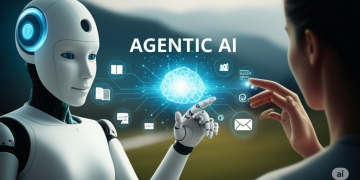In recent years, artificial intelligence (AI) has transitioned from a specialized research discipline to a central pillar of both corporate strategy and government policy. As AI models become more powerful, scalable, and commercially viable, investment in the sector has skyrocketed. According to recent industry reports, global AI investment—including venture capital, government funding, and private-sector R&D—reached hundreds of billions of dollars in the past year alone.
This surge in investment is not random. It is driven by clear and calculated objectives from two major actors: corporations and governments. While both see AI as a transformative force, their goals differ in scope, scale, and motivation. This article explores the underlying aims of these investments, providing insight into how the future of AI is being shaped—and who is leading the way.
Corporate Investments in AI: Driving Innovation and Securing Market Position
1. Securing Competitive Advantage
For private companies, the primary goal of investing in AI is to gain or maintain a competitive edge. In sectors where speed, accuracy, and personalization are critical, AI offers a significant advantage. Companies are deploying AI to automate decision-making, enhance customer experiences, and unlock new revenue streams.
Major technology firms such as Microsoft, Google, Meta, Amazon, and Apple are integrating AI across their product ecosystems. Microsoft’s multi-billion-dollar partnership with OpenAI is not only about advancing large language models like GPT—it’s about embedding generative AI into Azure cloud services, Microsoft 365 (e.g., Copilot), GitHub, and enterprise applications. Google has similarly integrated AI across its search, cloud, and advertising businesses, while Amazon uses AI extensively in logistics, recommendation engines, and AWS offerings.
By leading in AI development, these companies aim to set the standard for the next generation of computing, ensuring that their platforms remain central to business and consumer technology for years to come.
2. Reducing Operational Costs through Automation
AI enables companies to automate routine and repetitive tasks that were traditionally performed by humans. These range from customer service interactions via chatbots to supply chain management, data processing, and fraud detection.
For example, banks and insurance companies are investing heavily in AI to improve risk assessment, detect anomalies, and process claims more efficiently. Retail and logistics companies are using AI to optimize inventory, forecast demand, and manage warehouse robotics.
Automation through AI not only improves efficiency but also reduces long-term labor costs. This creates leaner operations, faster response times, and higher profit margins.
3. Developing New AI-Powered Products and Services
Companies are not just using AI to improve existing products—they are building entirely new offerings powered by machine learning, computer vision, and natural language processing. This includes AI tools for writing, coding, image generation, financial planning, health diagnostics, and more.
Firms such as Adobe, Salesforce, and IBM are creating specialized AI tools for business users, while media and gaming companies are developing generative AI solutions for content creation. This allows companies to enter new markets, diversify revenue streams, and provide more tailored solutions for specific industries.
4. Acquiring Talent and Intellectual Property
Many corporations are aggressively acquiring AI startups and recruiting top researchers to gain proprietary technologies and talent. Startups working on foundational models, autonomous systems, or specialized AI applications are highly sought after, and their acquisition helps large companies stay at the cutting edge.
By building in-house AI capabilities, these firms can better control their development pipelines, protect intellectual property, and reduce dependence on third-party tools. It also positions them as leaders in AI safety, ethics, and scalability.
5. Enhancing Shareholder Value and Strategic Positioning
In the eyes of investors, AI represents growth potential and technological leadership. Public companies that demonstrate robust AI capabilities are rewarded with higher valuations, increased media attention, and greater confidence from stakeholders.
Strategic positioning around AI also plays a role in branding. Companies that lead in AI are seen as innovators prepared for future disruption. This enhances their long-term resilience and makes them more attractive to both investors and partners.
Government Investments in AI: National Security, Economic Power, and Ethical Stewardship
While corporations are driven by profit and market competition, governments invest in AI to pursue broader national and global goals. These range from economic growth and defense to scientific leadership and public interest governance.
1. Maintaining Technological and Geopolitical Leadership
Artificial intelligence is now considered a foundational technology that will determine global power dynamics in the coming decades. Governments, particularly in the United States, China, and the European Union, see AI as a strategic asset on par with energy independence or military capacity.
The U.S. government, for example, has launched initiatives to support domestic AI innovation, fund national labs, and secure access to AI-critical technologies like semiconductors. China, through its “Next Generation AI Development Plan,” is aiming to become the global leader in AI by 2030, focusing on integrating AI into industries, military systems, and governance.
These national strategies are not just about economics—they are about sovereignty, security, and global influence in an era increasingly defined by data and automation.
2. Strengthening National Security and Military Capabilities
AI is revolutionizing modern warfare, intelligence gathering, and cybersecurity. Defense agencies are investing in AI for autonomous drones, battlefield analytics, logistics planning, and threat detection.
The U.S. Department of Defense, via DARPA and other branches, has committed billions to AI-related defense projects. Similarly, countries like Russia and China are accelerating the militarization of AI technologies. The goal is to enhance tactical capabilities, improve decision-making speed, and reduce dependency on human operators in critical missions.
At the same time, cybersecurity threats driven by AI—such as deepfakes, autonomous hacking, and algorithmic misinformation—are pushing governments to invest in defensive AI infrastructure.
3. Stimulating Economic Growth and Industrial Modernization
Governments view AI as a key driver of economic modernization. Public investment in AI can accelerate digital transformation across sectors such as healthcare, manufacturing, agriculture, education, and transportation.
To that end, many countries are creating AI-specific grants, public-private partnerships, tax incentives, and infrastructure investments. For instance, the European Union is channeling billions into AI R&D through the Horizon Europe program, while Japan, Canada, and South Korea have launched national AI strategies with significant funding commitments.
These efforts are designed to foster innovation, create high-skilled jobs, and ensure that domestic industries remain globally competitive.

4. Ensuring Ethical Development and Social Stability
Governments are not only funding AI development—they are also working to shape how it is used. As AI becomes embedded in critical public systems such as law enforcement, education, and healthcare, the need for ethical oversight grows.
The European Union’s proposed AI Act is the most ambitious attempt to regulate AI globally, aiming to set standards for transparency, accountability, bias prevention, and human oversight. UNESCO and the OECD have also released ethical AI guidelines with a focus on inclusivity, fairness, and human rights.
Investing in ethical frameworks, regulatory sandboxes, and open-source AI infrastructure reflects a long-term commitment to ensuring AI aligns with democratic values and serves the public good.
5. Building Strategic Independence in AI Infrastructure
Recent global disruptions, including the COVID-19 pandemic and geopolitical tensions, have exposed the fragility of international supply chains and dependencies in key technologies. In response, many governments are working to secure domestic capabilities in AI infrastructure.
This includes investing in semiconductor manufacturing (e.g., through the U.S. CHIPS and Science Act), high-performance computing, AI training centers, and sovereign data infrastructure. The goal is to reduce reliance on foreign hardware and software, thereby safeguarding national autonomy in an AI-dominated world.
Conclusion: AI Investment as a Strategic Imperative
The recent surge in AI investment is not simply about adopting new technologies—it is a strategic maneuver with profound implications for the future of global business, governance, and society. Corporations are betting on AI to transform their operations, products, and market positions. Governments are investing to secure geopolitical advantage, economic resilience, and ethical governance.
While the motivations differ, both sectors understand that artificial intelligence is not just another tool—it is a transformative force that will shape the structure of economies, the nature of work, and the distribution of power for decades to come.
As AI continues to evolve, the challenge will not be merely to develop faster or smarter algorithms, but to ensure that this powerful technology is directed toward inclusive progress, human dignity, and sustainable growth.











































